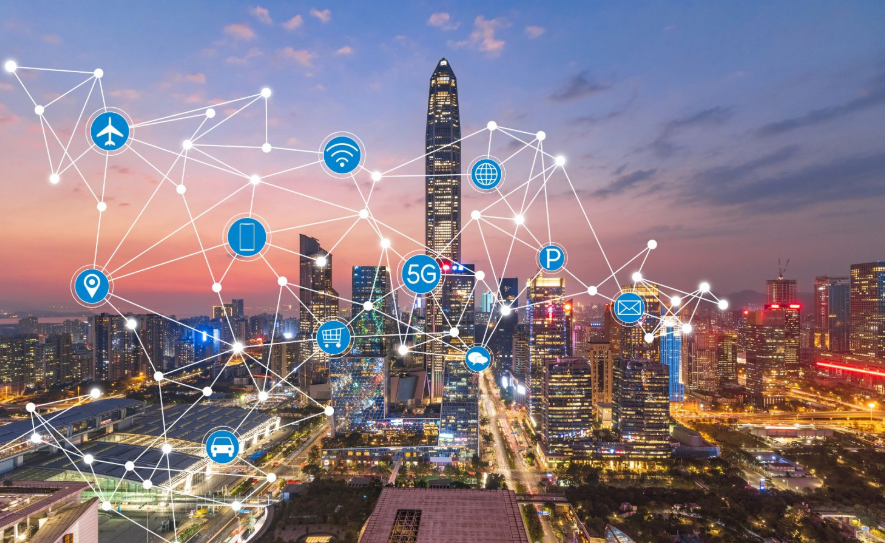Cities are evolving at an astonishing pace. The concept of Smart Cities is reshaping urban life, blending technology with infrastructure to create environments that enhance our daily experiences. Imagine stepping out of your home and finding everything—transportation, energy management, public safety—working seamlessly together. This isn’t a scene from a futuristic movie; it’s the reality that many cities around the globe are beginning to embrace.
As urban populations continue to grow, so do the challenges they face. Traffic congestion, pollution, and inadequate public services can hinder quality of life for residents. Enter Smart Cities—a solution designed not just to meet these challenges but also to elevate living standards through innovation and connectivity.
What makes a city ‘smart’?
A city qualifies as ‘smart’ when it leverages technology to enhance the quality of life for its residents.
At its core, a smart city integrates digital solutions into urban management. This includes advanced infrastructure that uses sensors and data analytics.
Connectivity plays a crucial role. High-speed internet access is essential, enabling seamless communication between devices and systems.
Another key element is sustainability. Smart cities focus on eco-friendly practices, such as renewable energy sources and efficient waste management.
Citizen engagement also defines a smart city. Residents are encouraged to participate in decision-making processes through interactive platforms.
Public safety features contribute significantly. Surveillance systems and emergency response technologies help ensure safer environments for everyone living there.
Benefits of Smart Cities
Smart cities bring a myriad of benefits that enhance urban living. First, they leverage technology for efficient resource management. This leads to reduced waste and lower energy consumption.
Enhanced public safety is another significant advantage. Smart surveillance systems and data analytics help predict crime patterns and improve emergency responses. Residents feel more secure knowing their city is proactively monitoring potential threats.
Transportation also sees transformative changes in smart cities. Integrated traffic management systems can reduce congestion, making commutes faster and less stressful. Real-time updates keep citizens informed about transit options.
These cities often prioritize sustainability by promoting green spaces and renewable energy sources, enhancing the overall quality of life for residents while protecting the planet’s future.
Examples of Successful Smart Cities around the World
Barcelona stands out as a model for smart city initiatives. The integration of IoT technology enhances public services, making transportation more efficient and reducing energy consumption.
Singapore is another example. Its extensive use of data analytics helps manage traffic flow and optimize waste collection. Smart sensors monitor air quality, ensuring residents breathe cleaner air.
In Amsterdam, innovative urban planning incorporates cycling infrastructure with smart lighting systems to improve safety at night. This approach promotes sustainable transport while enhancing the city’s charm.
These cities showcase how intelligent solutions can transform urban environments into vibrant spaces that prioritize convenience and sustainability for their inhabitants.
Challenges and Concerns for Smart City Implementation
Implementing smart cities isn’t without its hurdles. One major challenge is the integration of various technologies. Different systems need to communicate seamlessly, which often requires significant investment and coordination.
Data privacy is another pressing concern. As cities collect vast amounts of personal information to enhance services, residents worry about who has access and how it’s used. Trust becomes a critical issue in fostering citizen engagement with these initiatives.
There’s the risk of deepening social inequities. If not designed thoughtfully, smart city solutions may benefit only certain demographics while leaving others behind—creating a digital divide that undermines community cohesion.
The Impact on Urban Life
Smart cities are reshaping urban life in profound ways. With connected technologies, residents experience enhanced convenience and efficiency daily. From smart traffic lights that reduce congestion to public transport updates delivered in real time, navigation becomes seamless.
Safety is also improved through advanced surveillance systems and emergency response integrations. Citizens feel more secure knowing their surroundings are monitored intelligently.
Community engagement thrives in these environments too. Digital platforms allow citizens to voice concerns, participate in decision-making, and collaborate on local projects. This connection fosters a sense of belonging.
As urban areas evolve into smart ecosystems, they promise not only technological advancements but also enriched lives for all city dwellers. The future looks bright for those living within the embrace of innovation and connectivity.
Future Possibilities for Smart Cities
The future of smart cities holds immense promise. With advancements in technology, urban environments are set to evolve significantly.
Imagine streets lined with autonomous vehicles that communicate seamlessly, reducing traffic congestion and enhancing safety. Public transportation could be transformed by real-time data analytics, optimizing routes based on demand.
Renewable energy sources will play a crucial role as cities strive for sustainability. Solar panels and wind turbines integrated into buildings can power urban centers efficiently.
As artificial intelligence advances, predictive models might enhance city planning and emergency responses. Smart sensors could monitor air quality and noise levels in real time, informing policy decisions aimed at improving public health.
Innovative partnerships between governments and tech companies may lead the way toward creating more livable spaces for everyone.
Conclusion
The evolution of urban life is being reshaped by the rise of smart cities. These innovative hubs leverage technology to improve infrastructure, enhance services, and create sustainable environments. As we witness this transformation, it’s clear that the benefits extend far beyond convenience; they touch on quality of life and environmental stewardship.
Smart cities present a vision for modern living where connectivity reigns supreme. The integration of data-driven solutions not only streamlines daily operations but also fosters community engagement and participation. This shift towards more interactive urban spaces encourages residents to take an active role in their city’s development.

